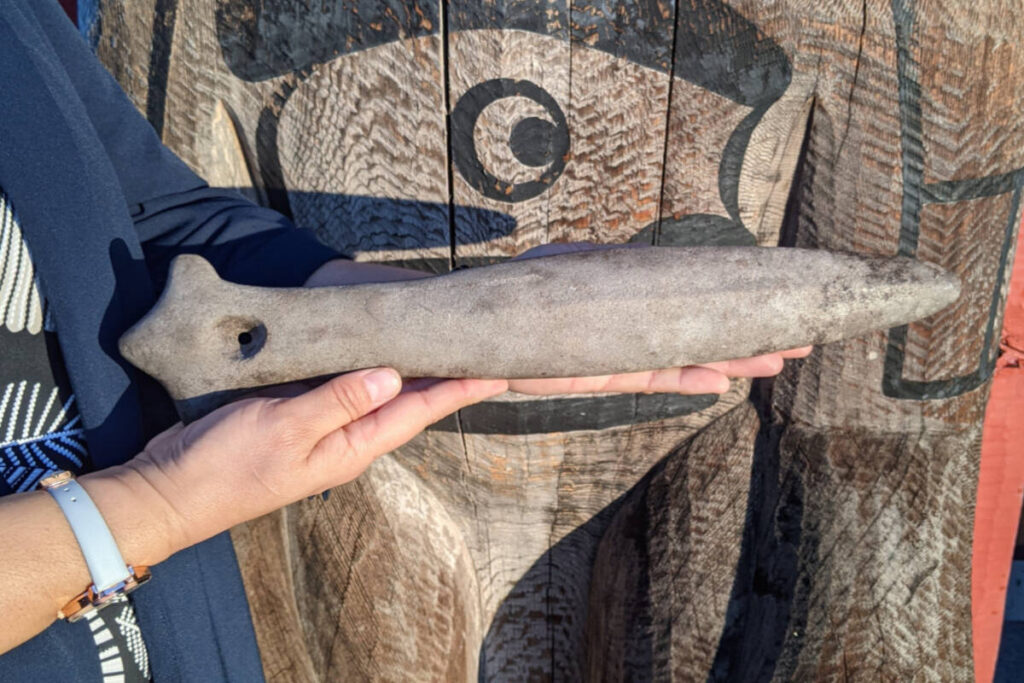Royston-area man turns up the Indigenous artefact in yard
Mark Lake was cleaning up his Royston-area yard last April when he came across an object that looked like it had been around a while. He had been working in a wooded area after an old maple tree had blown over. Over the years, he’d found lots of junk before though never anything of historic value, but what he turned up turned out to be an Indigenous artefact.
“I picked this object up, sticking out from underneath a young maple, and didn’t think anything of it,” he said.
At first, he thought it was a type of industrial waste. Once he got around to cleaning it, he realized it was some kind of carving.

“I was a geologist in a previous life,” he said. “I recognized it was made out of sandstone.”
He showed it to a sculptor friend who told him from the workmanship it looked like a labour of love.
Lake’s wife Katie has a friend who works with K’ómoks First Nation, so the Lakes got in touch to find out more and sent a picture of the object. The process then started to identify and repatriate it. An archaeologist working with KFN examined it, as did a couple of others.
“The archaeologists have looked at it and certainly think it’s pretty unique,” Lake said.
The couple handed the object over to KFN, and Lake says Chief Nicole Rempel was excited to receive the artefact. It is about 45 cm long, weighs about 1.5 kg and is probably made of medium-grade sandstone.
“It’s fairly hefty and quite smooth in the handle area,” Lake said.
He is not sure of its origin. There is a hole in the handle, perhaps for a rope. Whether it was a functional or strictly ceremonial club remains a bit of a mystery, but it seems to have originated in the Vancouver Island region.
“It might not have moved very far,” he said. “It’s pretty rare to find one that’s that complete.”
After contacting KFN, the Lakes agreed to have their Gartley Point property mapped for archaeological purposes, and it will be added to the provincial registry’s archaeological branch.
For KFN, the Lakes’ willingness to collaborate on this effort is a hopeful sign for broader community relations.
“In a time when Reconciliation is a central focus for our Nation, and more broadly across B.C. and Canada, it’s encouraging to see residents within KFN territory recognize the importance of returning artefacts to the people whose ancestors made them,” Chief Nicole Rempel of KFN said in a news release. “It is my hope that more Vancouver Island residents, and in fact all Canadians, will recognize the importance of these artefacts to local First Nations and reach out when they do come across something. I am grateful to the Lake family for connecting with KFN, so that we can learn more about our history and make it accessible to our members and the broader community.”
KFN asks anyone who has found artefacts in KFN territory to contact Candace Newman (reception@komoks.ca), KFN’s archaeology and referrals co-ordinator, to assess the cultural object.





